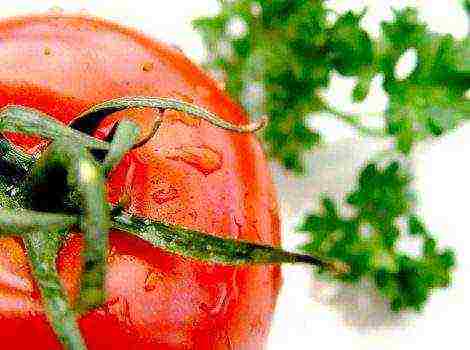Content
- 1 Manufacturing and standardization
- 2 GOST and chipboard density
- 3 Technical characteristics of chipboard and laminated chipboard: photo
- 4 Leading manufacturers of laminated chipboard: Egger, Kronospan, Lamarti, Nevsky Laminat
- 5 Safety
- 6 Price
- 7 Which is better: MDF, chipboard or chipboard?
- 8 Read also:
- 9 What kind of chipboard are
- 10 Difference from MDF and fiberboard
- 11 Pros and cons
- 12 Reviews and ratings of chipboard
Chipboard is a building material that is a composite. It is made from small wood chips and binder by pressing. This material entered the market due to a shortage of lumber for furniture and construction in post-war Europe.
Inexpensive and high-quality material is used in the construction and manufacture of cabinet furniture, containers, and wagons.
Manufacturing and standardization
- Getting shavings. Any shavings that remain after processing sawn timber and production waste are suitable for the production of chipboard. Non-commercial wood is cut into meter-long pieces and soaked in heated water. Then the lumps are cut in half and processed in machines that cut the shavings along the fibers. For the production of boards consisting of several layers, chips of different lengths are needed.
- The cut shavings are processed in mills, where they are crushed and smoothed. The processed raw materials are placed in bunkers.
- Drying and sorting. The shavings are transported from the hopper to the drying unit via a conveyor. In vortex drying, hot air acts on the raw material through the mesh bottom. The automatic blades constantly stir the chips for even moisture evaporation.
- Dry shavings enter the mixer, where they are mixed with glue. Then a carpet is formed from it, which is compacted with the help of presses.
GOST and chipboard density
GOST 10632-89 (1997), GOST R 52078-2003, GOST 10632-2007 - documents regulating the quality of chipboard. 5-30% - parameters of swelling in water; bending strength - 5-30%; when stretched - 0.2-0.5 MPa; humidity - from 5 to 12%.
Density (kg / m3):
- low density - less than 550;
- medium - 550-750;
- high - 750.
Classification and varieties
By the number of layers, chipboard is divided into single-layer, two-, three- and multi-layer. Basically, the material has three layers: the outer layers are formed from small chips, the inner ones are made from larger raw materials. According to the level of processing, polished and unpolished chipboard are distinguished.
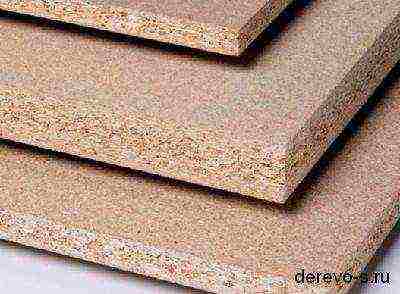
Chipboard grades:
- Plates of the first grade have a perfectly flat surface, even the slightest chips are absent.
- The material of the second grade has some deviations from the ideal: small scratches, delamination of the composite, chipping on one of the lines.
- The third grade is culling. This includes slabs with variations in thickness, deep delamination, cracks and scratches.
Material safety
Regardless of the grade, chipboard is divided into classes for the release of free formaldehyde:
- Plates of class E1 are considered harmless to humans, containing 10 mg of formaldehyde in 100 g of the composite. They can be used in children's rooms, other living quarters;
- slabs of class E2 contain up to 30 mg of formaldehyde per 100 g of composite; they are not used for residential premises.
You may not know yet, but not all types of chipboard are susceptible to fire and destruction by water. There are plates of improved composition - with increased moisture and fire resistance.The former are obtained by adding paraffins to the mixture for their production. Such plates are marked with the letter B. Fire resistance is achieved by adding fire retardants to the mixture that prevent combustion.
Processing of slabs
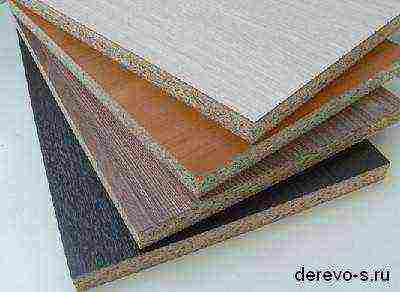 A decorative look is given to chipboard slabs using the following technologies:
A decorative look is given to chipboard slabs using the following technologies:
- covering with several layers of paper impregnated with melamine-formaldehyde resins (melamine-coated chipboard is also called laminated);
- lamination - paper is also used, but lining is done using a different technology;
- lining with thermoplastic foil;
- cladding with natural wood veneer.
Where are particle boards used?
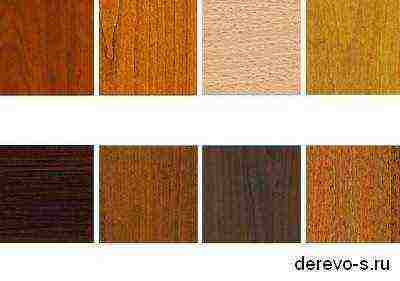 Having the advantages of natural wood, chipboard is devoid of its disadvantages: it is geometrically stable, durable, and insects do not spoil it. That is why the material is so widely used.
Having the advantages of natural wood, chipboard is devoid of its disadvantages: it is geometrically stable, durable, and insects do not spoil it. That is why the material is so widely used.
Plates, devoid of decorative properties, of low grade, are used for the manufacture of formwork and subfloors. Premium slab is a good material for budget furniture, roof cladding and wall cladding. Plates finished with film, paper and veneer are used for the manufacture of furniture facades, interior doors. There are materials that are ideal for children's rooms and bathrooms, they are non-toxic and moisture resistant.
A variety of types of particle board allows you to choose the right material for solving any construction problem. Large slabs are a guarantee of convenience in work, the ratio of price and quality of the material is ideal.
Discovery Channel Video:
Today, various materials are used for the production of furniture and decorative coatings - chipboard, fiberboard, MDF, solid wood. However, more and more manufacturers prefer to deal with laminated chipboard. At the same time, many buyers are still perplexed by the abbreviation chipboard: what it is, how this material differs from the varieties mentioned above, and what are its advantages and disadvantages. Answers to these questions will be provided in this article.
Chipboard is a particle board with a decorative coating
Technical characteristics of chipboard and laminated chipboard: photo
You can notice the similarity of the terms chipboard and chipboard. The latter stands for chipboard or chipboard. The abbreviation itself, although it is commonly used, is not entirely correct. It would be more correct to write DSP. We are talking about a composite material, in the production of which, due to hot pressing, sawdust and shavings, together with binder formaldehyde resins, take the form of a solid sheet.
Laminated and veneered chipboard
This material was first invented back in the 30s. XX century, but the mass production of chipboard began only in the 50s. Last but not least, this is due to the difficult post-war situation. For the needs of mass production, a cheap and affordable material was required, and natural wood was expensive and the waste during its processing reached 60%. In addition, the tastes of buyers have changed significantly - pretentious bulky furniture did not in any way correspond to the spirit of the era, which combined the desire for simplicity, convenience and ease with the need to save money. Chipboard, on the other hand, fully met all these requirements.
Chipboard production technology
For the production of chipboard, woodworking industry waste and specially crushed illiquid trunks are used:
- shavings and sawdust (previously they were simply burned as garbage) are dried in a special drying chamber and driven through a cyclic installation that rejects too large particles for re-crushing;
The process of sawing chipboard and milling the ends is carried out on special equipment
- raw materials that meet the requirements are mixed with formaldehyde resin and transferred to a conveyor belt, where it is cold pressed into the required shape;
- using a hot press, the layers of the workpiece are firmly glued together, then the sheets are cooled, dried and sawn into plates of standard sizes;
Pros and cons of chipboard
The resulting durable and very affordable material instantly found application in the manufacture of upholstered and cabinet furniture, carriages, in construction (as formwork, partitions, beams, floors, sheathing, frames). Among its advantages, one can note good indicators of heat and sound insulation.
Durable and inexpensive chipboard is used as partitions, floors, cladding, formwork
However, chipboard also has a number of serious drawbacks. It can absorb moisture (up to a third of its original volume) and deform. The plate can also lose its shape under the influence of heat. This limits the use of chipboard sheets in the kitchen or bathroom. The only exceptions are canvases that have undergone a special treatment, as a result of which the material becomes moisture and fire resistant.
Thanks to its dense structure, chipboard holds nails and screws well. However, due to the same structural features, the fastening hardware cannot be re-fastened, as the plate will begin to crumble. For the same reason, the material is not suitable for milling and creating curved paths.
And, finally, the most disadvantage of chipboard boards is the use of urea-formaldehyde and phenol-formaldehyde resins in the process of their manufacture. They prevent wood decay processes, however, they do not have the most favorable effect on human health.
Fan coolers are used to cool the chipboard, which is an installation with a rotating drum
Note! Formaldehyde is an extremely dangerous chemical. It can accumulate in the human body, cause poisoning or provoke the development of serious diseases. The main signs of poisoning are cough, irritation of the mucous membranes of the throat and eyes, dizziness, fatigue.
The main types of chipboard
There are several classifications of chipboard.
The formaldehyde emission class E1 and E2 indicates the amount of the harmful substance in the chipboard. The E1 class is considered to be more environmentally safe (it corresponds to the GOST 10632–89 adopted in Russia). E2 class is not suitable for use in children's rooms. Many European manufacturers have already discontinued the production of this class of chipboard.
Chipboard is made from pressed wood chips with the addition of a binder - thermosetting synthetic resin
Depending on the quality and appearance of the finished product, chipboard is:
- first grade (for its production, only high-quality raw materials are taken without foreign inclusions, most often sawdust of one type of wood. The plate is smooth, without chips or with minimal defects and must be decorated on both sides with film or veneer);
- second grade (scratches and chips are allowed, cladding is optional);
- third grade (has serious defects in the form of cracks, chips, irregularities. The slab is not revetted, it is used only in auxiliary construction).
The veneer board looks as if it is made of fine wood
Chipboard is distinguished by the type of cladding:
- rough (do not have cladding);
- laminated (covered with melamine film or special resistant varnish);
- veneered (have a cladding in the form of a thin sheet of natural wood).
To figure out which is better - chipboard or chipboard, you need to familiarize yourself with the characteristics of laminated panels.
Chipboard: what is it, variety of colors
So what is the LDPC? In fact, it was already mentioned above and the decoding of chipboard is simple - it is a laminated chipboard. For the manufacture of laminated chipboard (more precisely - laminated chipboard), only high-quality polished chipboard is used.
The most reliable and proven facing material is natural veneer
At the final stage of production, they are covered with a special polymer film at high pressure and high temperatures. This film is made from paper impregnated with melamine resin. Sometimes, in the manufacture of expensive LSDP, a special varnish is used, which is not afraid of water and scratches.
Finished chipboard panels are cooled, dried and sawn in accordance with standard dimensions.
Chipboard are devoid of many of the disadvantages inherent in chipboard. They are not afraid of moisture and high temperatures, therefore, furniture makers often prefer to assemble kitchens from chipboard (photos of these headsets clearly demonstrate the popularity of such a solution).
Sawing (cutting) of laminated chipboard is carried out on modern high-performance equipment
An additional advantage of this material is its low cost and ease of processing. It is enough only to cut the chipboard sheet and trim the edges with an edge, which, by the way, significantly reduces the level of formaldehyde fumes.
Useful advice! Chipboard can be edged only on a special machine. There are many firms and stores of building materials that provide a similar service. From the obtained blanks, it will not be difficult to assemble furniture from chipboard with your own hands - a bed, a bookcase or a wardrobe.
Chipboard is very strong and holds fasteners well. They are practically not afraid of mechanical damage, and with proper and completely uncomplicated care they can last at least 10 years.
Furniture made of chipboard is able to withstand the effects of steam, water and significant temperature drops
Among the undoubted advantages of laminated panels, one can note the widest color palette presented in the laminated chipboard color catalogs. Thanks to the coating, they can imitate any material, fit into any interior.
Related article:
Chipboard grooved moisture resistant: a new development in the building materials market
Characteristics and main advantages of the material. Areas of use. Features and installation rules. Average cost of production.
Catalogs with samples and photos of laminated chipboard, the colors of which are represented in hundreds of shades, can demonstrate several palettes:
- plain smooth (vanilla, blue, green water);
- plain textured (aluminum, titanium, concrete);
- wood-like colors (maple, cherry, wenge);
- glossy decors;
- fancy decors (various patterns and designs).
Furniture made of laminated chipboard goes well with various materials - glass, metal, ceramic tiles
All this makes laminated chipboard sheets a versatile and extremely popular material. They are used in bathrooms and children's bathrooms, to create decorative partitions, upholstered and cabinet furniture. On the forums, you can easily find many positive reviews: laminated chipboard kitchens are able to withstand the effects of steam, water and significant temperature changes.
Laminated boards are perfectly combined with other materials - glass, mirrors, metal, plastic panels, as well as fiberboard and MDF.
Which is better: chipboard or MDF
The variety of materials in stores cannot but bewilder shoppers. Which is better for furniture - MDF or chipboard?
The laminated chipboard color catalog offers customers a large selection of shades and textures
There are fundamental differences between chipboard and MDF. Chipboard is made from wood shavings and sawdust, formaldehyde acts as a binder.
In the production of MDF, wood dust is used (waste of the woodworking industry crushed to a very fine fraction) and exclusively natural binders - paraffin and lignin. Thanks to this composition, MDF is much more environmentally friendly than chipboard. They can be safely used even for decorating children's rooms.
Note! Paraffin is not only environmentally friendly, but also has water-repellent properties, so there is no need to additionally treat MDF boards with special impregnations.
Radial facades can give originality to furniture structures
Unlike laminated chipboard, MDF is a very plastic and soft material. It is easy to mill, which is why it is so popular in the manufacture of luxury furniture. Most of the curved elements, carved headboards and fanciful fronts are made from MDF. Photos of beds made of laminated chipboard or kitchen facades cannot please with such decorativeness, because the furniture is made of material with a crumbling edge, unsuitable for milling.
Nevertheless, many, choosing between chipboard or MDF, prefer laminated panels. The reason is simple: the cost of MDF is much higher than democratic chipboards. According to consumer reviews, laminated chipboard furniture is a successful leader in the domestic market and, not least of all, this is due to moderate prices.
Chipboard panels have a wide range of colors
Another weighty argument in favor of laminated chipboard is the richness of color solutions. In the laminated chipboard catalog or on the sites of online stores, you can choose a suitable shade or texture that will harmoniously fit into any interior style - from classic to modern.
Leading manufacturers Laminated chipboard: Egger, Kronospan, Lamarti, Nevsky Laminate
When buying laminated chipboard, it is very important to make sure that the product has all the necessary certificates that guarantee the safety of the material for human health and be of high quality, ensuring a long service life. However, only large manufacturers can make sure that at each stage of production the norms and technical regulations are strictly observed. The leaders in the domestic market are foreign companies Egger and Kronospan, as well as domestic manufacturers Lamarti and Nevsky Laminat.
To refine the product, a special edge is glued to the visible ends of the laminated chipboard panels
Chipboard Egger: colors and material advantages
The company is headquartered in Austria. Founded in 1961 by Fritz Egger Sr., the modest family business has gradually grown to become one of the leading chipboard manufacturers in the world.
The highest quality of manufactured products, an extensive catalog of Egger laminated chipboard colors and reasonable prices are achieved through the opening of local production facilities in 7 European countries, including Russia. First-class raw materials are mainly made from softwood and do not include foreign elements. Laminated boards fully comply with European safety standards.
A huge variety is provided by the Egger laminated chipboard color catalog, which allows you to bring to life any design solution:
- plain laminated chipboard (white, lagoon, alabaster, beige sand, canyon, pumpkin yellow, green water, Chinese red, reed, Baltic blue and dozens of other colors) - are presented in matte and glossy versions;
Chipboard is a moisture resistant and very environmentally friendly material
- textured decors (light concrete, beige leather, gray-white amalvi marble, titanium, quartz bronze, indigo quartz, etc.);
- Laminated chipboard Egger colors imitating wood (calvados pink, light venchester oak, blossoming pear, natural rosewood, cremona oak champagne, zebrano havana, natural merano - more than 100 shades that perfectly imitate natural wood).
We can state a stable increase in demand for laminated chipboard Egger. Feedback from customers only confirms the positive dynamics, while noting the high wear resistance of the material, excellent quality and minimal presence of formaldehyde resins ("pine smell without chemicals").
Chipboard Kronospan: high kaquality and rich assortment
Another Austrian company, whose history began with a small family sawmill in Salzburg in 1897. Currently, its activities cover 24 countries around the world.
Chipboard Kronospan has a high quality and a wide range of colors.
Among the undoubted advantages of the laminated boards of this company are:
- good moisture resistance, which allows them to be used in bathrooms and kitchens;
- increased wear resistance;
- solid color catalog of laminated chipboard Kronospan;
- environmental friendliness;
- anti-static, which guarantees additional protection against dust;
- fairly democratic pricing policy;
- long service life (up to 20 years).
Chipboard has many color and texture solutions for furniture decor for any interior
The colors presented in the catalog of laminated chipboard Kronospan can be classified as follows:
- textures (deep pores, wood pores, office, smooth, shagreen, mother of pearl);
- plain (blue modra atoll, lime green, white facade, burgundy, Inca gold, lavender, viola);
- woody (laminated chipboard milan walnut, snow birch, laminated chipboard guarneri walnut, dark corduroy, light chipboard bodega, alder plank, rustic oak, warm shimo ash);
- fancy (sakura white, nameeo white, dark twist).
Even such a short overview of the colors of Kronospan laminated chipboard gives a good idea of how rich their palette is and how diverse the textures are. Actually, the surprisingly believable imitation of the rough surface of natural wood is a kind of visiting card of many lines of laminated chipboard of this Austrian company.
Chipboard can have: wood texture, stylized metal and stone, textured pattern
Lamartie: characteristics Chipboard, colors, photo with names
Due to strict quality control at every stage of production, laminated chipboards from the Syktyvkar Plywood Plant successfully compete in the Russian market with the products of foreign companies. Chipboards of this company are made from high-quality raw materials (coniferous and birch wood without impurities like bark), have an ecological certificate and excellent technical characteristics.
They are wear-resistant, not afraid of the effects of steam, moisture and high temperatures, environmentally friendly, durable and retain their original color for a long time, and Lamartie's impressive laminated chipboard color catalogs will make it possible to bring any design idea to life.
Lamarti laminated chipboard color catalog includes:
- solid colors (topaz, chili, serenity, coral, monsoon, lemon, sepia);
- textured decors (slate, titanium, chinon, aluminum, pine exotic concrete);
- imitations of wood (plum, marsala oak, light chipboard wenge, latte, bamboo, noche amati, bleached oak, elm, chipboard Italian walnut);
Extensive catalogs of laminated chipboard colors will make it possible to bring to life any design idea
- imitations of wood (plum, marsala oak, light chipboard wenge, latte, bamboo, noche amati, bleached oak, elm, chipboard Italian walnut);
- fancy colors of laminated chipboard Lamartie (linen, spring, arabica flowers, modern, luino, graffiti).
Chipboard Nevsky Laminate: affordable price, European quality
Laminated sheets from the Nevsky Laminat Plant compare favorably with their foreign counterparts in their low cost. Moreover, they have all the necessary quality certificates and good environmental performance. Chipboards of this manufacturer hold fasteners well, are not afraid of moisture, are resistant to mechanical damage and have a long service life.
The catalog of colors of laminated chipboard "Nevsky Laminat" offers customers a large selection of shades and textures:
- plain (orange, lime, anthracite, yellow daffodil, wine red, dark chocolate, white pearls);
- textured (linen, titanium, aluminum);
- fancy decors (litera nero, newport, hay, titanium, flora verde, mocha stitch);
- wood decors (chipboard ash shimo light, Indian ebony light chipboard, French oak, macassar, Swiss elm, jarrah, canterberry oak, caramel).
Due to its high wear resistance, laminated chipboard can be used in any premises
Regardless of whether the boards are produced in Europe or in Russia, laminated chipboard will be an excellent choice for many years to come due to the optimal combination of price and quality.
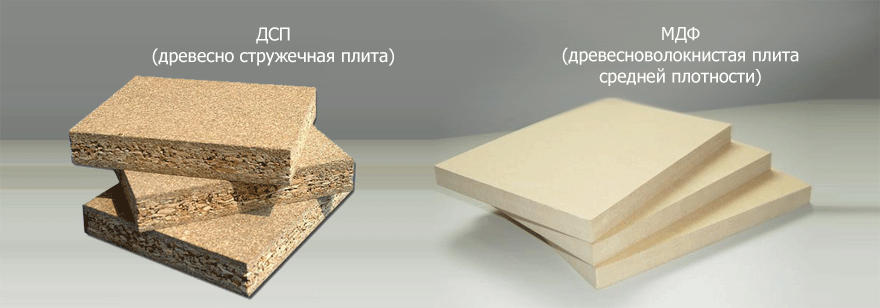
Photo:
"Sometimes a variety of goods is bad ..." - sighs visitors to the construction and hardware store, who have to choose between such similar board materials as MDF, chipboard and laminated chipboard. At the same time, it is completely incomprehensible to a non-professional which of the above can be used in this or that case. But to figure it out is not as difficult as it seems.
MDF (short for the English Medium Density Fibreboard) is a type of fiberboard with an average density and created by dry pressing (at a certain high pressure and temperature) fine wood chips. It is clear that, in this case, do not heat or squeeze the raw material, the shavings will not stick to each other. Therefore, a "binder" (something like glue) is added to them - urea resins modified with melamine.
The technology for the production of MDF was developed in the USA in the 60s of the twentieth century, in the same place in 1966 its industrial production was started. In Russia, the first MDFs were produced only in 1997.
Chipboard - chipboard (usually referred to as chipboard, although it is correct to use the abbreviation Chipboard) - is obtained by hot pressing chips (and other wood particles) mixed with a non-mineral binder. In this case, a particle board can consist of either one layer or several layers (three or more).
Particleboard has been produced in the USA for over 70 years, in Russia - somewhat less.
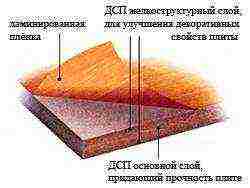
Chipboard is a type of chipboard, which is a plate laminated with melamine films. The unity of the design is achieved by the simultaneous exposure to high temperature and pressure. The surface of the chipboard can be made both smooth and embossed (imitating the structure of wood or any other materials).
Safety
The technology for the production of board materials implies that the content of harmful substances in MDF is less than in chipboard. We are talking about volatile substances, which are harmful to humans, released by resins (used as binders), which gradually (during long-term operation) "evaporate" and accumulate in the air if there is no sufficient ventilation of the room. All these substances do not cause instant damage to the human body and have a harmful effect only with prolonged contact with them (in other words, if you decide to lie down for a long time on a chipboard or MDF plate, then you will not die from poisoning with the substances they release, but from thirst, hunger or from old age).
However, the manufacturers nevertheless established a certain gradation:
- MDF - with strict adherence to the technology and the implementation of high-quality cladding of the surfaces of the structure, it is considered the least dangerous in terms of the release of harmful substances into the ambient air. In the production of MDF, the main binder is lignin, which is released during the heating of wood. Therefore, high-quality MDF is environmentally friendly;
- Chipboard of class E1 - takes the second place in terms of safety for the human body (but also only with the appropriate facing of surfaces);
- Particleboard of class E2 - emits the largest amount of harmful substances, is prohibited for production in foreign countries, and in Russia - is prohibited for the production of furniture and products used inside public and residential premises (GOST 10632-2007).
The difficulty in determining the harm actually caused by these materials lies in the fact that the information recorded in the certificates does not always correspond to reality (and sometimes certificates are attached to the materials not "native", that is, drawn up based on the results of tests carried out, but "purchased"). In addition, not all manufacturers (especially Russian ones) follow the recommended process technology for the production of MDF and chipboard, trying to save money when using lower quality resins.
Price
The simpler the production and the more readily available the raw materials, the cheaper the material will be.Since the main raw material for the production of MDF and chipboard is waste from the woodworking industry, the following factors will affect the difference in price:
- production technology (MDF is more expensive than chipboard),
- country of origin (board materials of foreign European firms will cost more than their Russian counterparts),
- the number of intermediaries between the manufacturer and the buyer (the more there are, the more expensive the material will end up),
- the presence of additional properties imparted to materials in the production process (fire resistance, biostability, water resistance),
- the presence, quality and durability of decorative coatings on MDF or chipboard (everything that gives a structure made of these materials more safety and strength is more expensive).
Which is better: MDF, chipboard or chipboard?
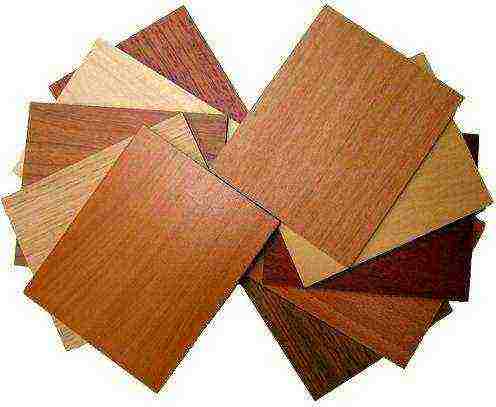
Unfortunately, this question cannot be answered unequivocally, since MDF and chipboard have their main purposes, in which their use is considered safe enough for humans.
So MDF and chipboard (laminated chipboard) of class E1 (with the obligatory facing of surfaces) can be used in the manufacture of furniture. In this case, special attention should be paid to the quality of the edges and seams between them and the face (surface of the slab). If the seams are not made of high quality, then water will get into them over time (for example, during wet cleaning of premises) and MDF (as well as chipboard) will "swell". At the same time, chipboard is much less moisture resistant.
But MDF reacts more strongly to high temperatures. Furniture made of MDF should not be placed too close to heating devices - it can warp.
MDF is a harder material, it does not crumble during milling - this allows you to make cutouts for fittings, create patterns and carvings on the surface. Unlike chipboard, MDF holds screws and other fasteners well.
But even if all the furniture elements are made with high quality, one should not forget that MDF and chipboard are materials of mass production, which to one degree or another (by different characteristics) are inferior to furniture made from properly dried and processed wood. In other words, even the best furniture made of panel materials will not last more than 10-25 years (depending on the quality of the raw materials and the accuracy of handling it during operation).
You also need to take into account that often in the production of furniture, only facades are made from MDF, and the walls and internal parts are made of chipboard. Furniture made entirely of MDF is quite expensive.
Another option for using MDF is to manufacture door elements from it at the factory. However, when adjusting parts at the installation site, it is worth paying attention to some nuances. So platbands made of MDF, when trimmed to size, turn out to be "unprotected" from one side of moisture, which can lead to their deformation.
But chipboard will be simply irreplaceable as a subfloor (since the material does not have direct contact with the air inside the room and, therefore, will not be able to release harmful substances into it). For "safety net", you can cover the chipboard with a protective paint and varnish coating.
Read also:
- Most popular screwdrivers
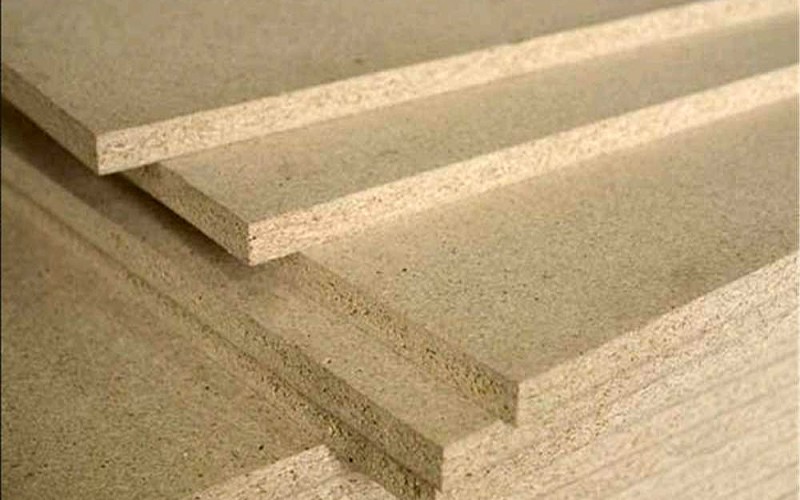
Almost everyone knows about chipboard, but still not everyone can answer what such a board is like. First, you need to indicate that the abbreviation familiar to everyone means "chipboard". And it has already become clear that it is made of two materials with the addition of formaldehyde resins, which act as a binding element.
What kind of chipboard are
There is a division of slabs into 3 classes. The first of them is of the highest quality, the last one already belongs to the defective varieties. On the surface of such a panel there will be many chips, defects and detachments, which is why they can be used only in those places that are closed from view. Particleboard of the first class will be almost perfect, but the second will already have small defects.
Laminated chipboard there are different shades, thanks to a special coating - resin-paper film. A variety of choices for many becomes one of the decisive factors, because such a film is also of very high quality, and its surface is very difficult to damage.
This is how the laminated chipboard looks in the photo.
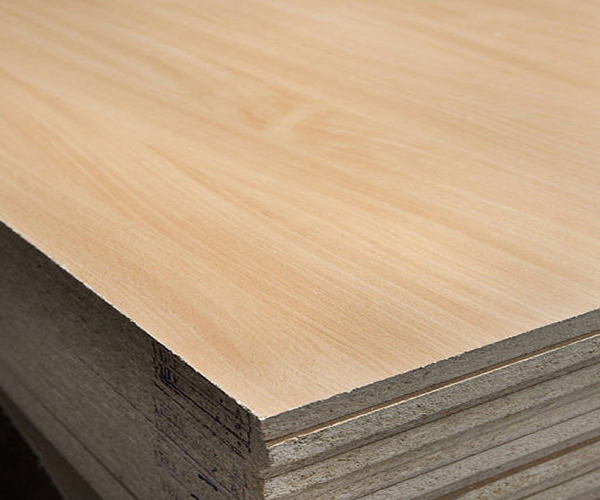
It endures not only mechanical, but also thermal effects very steadily. In addition, such a chipboard can very naturally imitate many types of trees. Laminated furniture boards and panels are usually made from this. They usually have a glossy surface, which visually differs from ordinary chipboard.
Laminated very similar to laminated, but if possible, give preference to the latter. It is more durable. And laminated, although it has the same properties and price, after a while it will begin to flake off.
Tongue chipboard especially in demand for finishing ceilings and floors due to the presence of grooves and dowels. Such plates are very easy to install, because no special skills or tools are required. What is important, such sheets can be disassembled and reassembled, this does not affect either quality or aesthetics.
Grooved chipboards have an order of magnitude higher thermal insulation and do not allow excess noise to pass through. They are usually made according to the E1 standard, which indicates their environmental friendliness.
In the photo - grooved chipboard
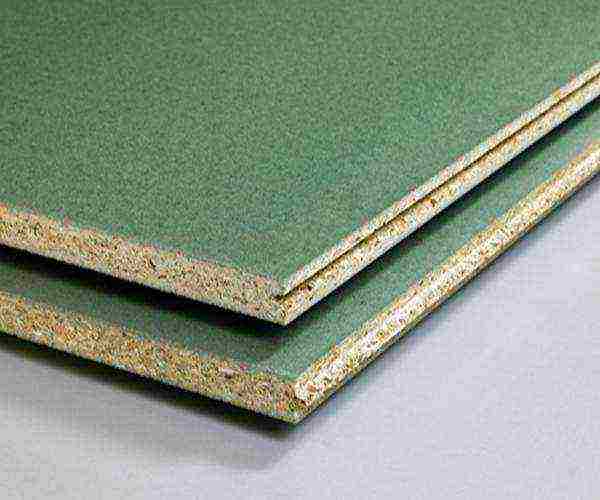
Moisture-resistant (waterproof) plate it is used even for exterior decoration, since those resins that were used for gluing have been replaced by urea-melamine ones. Thanks to this, such a board becomes an order of magnitude more durable, resistant to swelling and delamination. This already suggests that the structures built from it are not only reliable, but also durable.
Veneered board types widely used in various fields. They are usually covered with veneer (veneered chipboard), which imitates the surface of valuable species. Thanks to high-quality technology and the fact that several layers of varnish are applied afterwards, and this preserves the appearance of the panel for a long time.
If solid chipboard plates are usually used for decoration, for example, walls, then tubular ones are used for the production of doors. With a fairly light weight, there are all the important characteristics for it. This is fire resistance, sound insulation, and the ability to retain heat.
Photo of a door filled with tubular chipboard

The one-piece panel is almost 60% heavier than the tubular one, which is why it is practically not used in this area. The compressive strength remains high, and the surface itself does not swell from the abundance of moisture.
Difference from MDF and fiberboard
In addition to particleboard, there are also fiberboard and MDF. They are very similar, but in order to learn how to distinguish them, it is still better to learn more about the last two materials.
So, MDF is made from the smallest sawdust. Experienced builders say that the difference between it and chipboard is about the same as between ingredients chopped with a mixer and a meat grinder. You can even distinguish them by their appearance.
And although the filler in the chipboard is larger, nevertheless, MDF wins over it in terms of environmental friendliness. After all, inside it, the chips are bonded with the help of paraffin and lignin. Because of this, it is gradually replacing the usual chipboards.
In addition to high quality and environmental friendliness, MDF also wins in terms of plasticity. Despite its robustness, it can even be processed with fine detail. Such a panel lasts longer than ordinary wood, therefore it is used to create furniture. For the CIS countries, there is still one drawback - this is too high a price, since the production of MDF is poorly established.
Wood-based board, or, simply, fiberboard, is much more common than both materials described above. Drawers, cabinets, other furniture - run your palm along their bottom or back wall. If you feel a rough surface, then this is fiberboard.
It is made by pressing wood dust and subsequent gluing.But, most importantly, in this case, the technology of wet pressing is used in the manufacture, and the wood shavings are steamed at the beginning.
The difference with chipboard is less strength. Moreover, it is always thin, since a larger size cannot be made due to a special technology. Fiberboard is sometimes laminated on one side, but on the other, it always remains rough.
Despite not so good strength indicators, it is quite durable and has a lower price. But, of course, it will not work to make a completely furniture structure out of it, and the main disadvantage of fiberboard is in a narrow range of applications. You need to decide for yourself what is better than MDF, fiberboard, chipboard or chipboard, you need even at the planning stage, since the final cost of the finished object will depend on this.
The video will help you understand a wide range of materials for furniture production:
Pros and cons
Among the positive aspects are the following:
- Low price. Perhaps the most important of the advantages is that it can be used both in construction and in the manufacture of furniture;
- Strength;
- Hold nails and screws satisfactorily without deforming;
- High resistance to moisture.
But, as in any other case, there are some disadvantages. The first, of course, is the use of formaldehyde resins in production. The environmental friendliness of the material is clearly not up to par. But here it is worth noting that there are two types of chipboard: E1 and E2.
The first among them meets the standards and is not so harmful, as evidenced by the fact that it is approved for use in the manufacture of various children's furniture. Panels of German and Austrian production are traditionally considered the most environmentally friendly.
Another disadvantage is the inability to use the material for fine processing (for example, obtaining different shaped parts), due to its hardness. But this minus is not particularly critical.
A few more words about the advantages and disadvantages of the material:
Reviews and ratings of chipboard
The material usually receives positive reviews, since it combines a number of very good positive characteristics, coupled with an acceptable price. Of course, chipboard is a cheap analogue, but for people with an average income during construction, it is one of the best assistants. Indeed, thanks to its qualities, it is quite simple to work with and can well imitate even valuable breeds, which is important.
Based on all of the above, this material is given the following marks according to the main criteria:
- Price - 5. Particleboard is more than available and there can be no complaints about it;
- Practicality - 5. It is used in a very wide range of construction and furniture manufacturing;
- Appearance - 5. Deserves a high mark due to the ability to imitate expensive breeds and, most importantly, to maintain this appearance for a long time;
- Ease of manufacture - 5. Although, of course, you cannot do it at home;
- Labor intensity when using - 4. It is impossible to make carved and figured parts;
- Environmental friendliness - 4. Here one could even give a score of "3", but there are very environmentally friendly chipboards, which are allowed to be used even in children's rooms.
And in conclusion, we can summarize what the chipboard is:
Did you like the article? Share with your friends on social networks:

